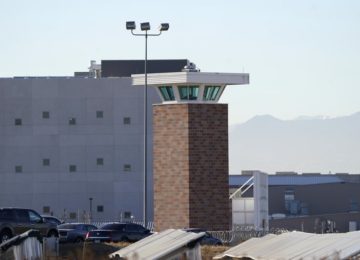Nikki Giovanni, finding the song in the darkest days
Part of the Black Arts Movement in the 1960s, part of a Biden campaign ad in 2020, she has never stopped writing. — NYT: Top Stories

Part of the Black Arts Movement in the 1960s, part of a Biden campaign ad in 2020, she has never stopped writing. — NYT: Top Stories

The ruling reduced a four-year ban to two, but will keep Russian teams out of the next two Olympics and dozens of other global competitions. — NYT: Top Stories
Application Based on Overall Survival and Progression-Free Survival Data Comparing KEYTRUDA Plus Chemotherapy to Chemotherapy Alone From Pivotal Phase 3 KEYNOTE-590 Trial KENILWORTH, N.J.–(BUSINESS WIRE)–$MRK #MRK–Merck (NYSE: MRK), known as MSD outside the United States and Canada, today announced that the U.S.

Peter Billingsley is dishing on a little-known secret from the set of “A Christmas Story.” — FOX News

Surrounded by Army cadets, President Donald Trump watches the first half of the 121st Army-Navy Football Game in Michie Stadium at the United States Military Academy, Saturday, Dec. 12, 2020, in West Point, N.Y. (AP Photo/Andrew Harnik) WASHINGTON (AP) — President

Election-related falsehoods have subsided, but misleading claims about the coronavirus vaccines are surging — often spread by the same people. — NYT: Top Stories

The guard tower stands near the Colorado Department of Corrections Denver Reception and Diagnostic Center Tuesday, Dec. 8, 2020, in east Denver. Amber Johnson of Fayetteville, Ark., is fighting for vaccination against the coronavirus for her 63-year-old father, Ronald, who is an
Environmental goals build on previously announced D&I commitments to enhance the company’s enterprise ESG efforts PRINCETON, N.J.–(BUSINESS WIRE)–Bristol Myers Squibb (NYSE: BMY) today announced it is strengthening its commitment to environmental sustainability on a global basis by setting new 2030 and 2040
Design Innovations Reduce Costs by Half, Decrease Production Time, and Increase Reliability of Spacecraft Solutions MONTVILLE, N.J.–(BUSINESS WIRE)–#JAXA—Marotta Controls, a rapidly growing aerospace and defense supplier based in New Jersey, today announced that it will be supplying critical system valves to Honeybee